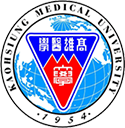-Dr. Hsu Hsu-Liang, Director of Ophthalmology, Kaohsiung Medical Univerity Gangshan Hospital (KMUGH)-

Due to environmental and lifestyle factors, the prevalence of dry eye disease (DED) is increasing yearly, now affecting estimated 15–50% of the population. Formerly viewed as a symptom, dry eye is now recognized as a distinct and complex disease. With the rise of precision medicine, effective treatment for DED also follows the way..
Definition and Tear Film Structure
DED simply refers to tear film instability caused by a variety of factors, resulting in ocular surface damage and related symptoms. The tear film consists of three layers:
• The lipid layer, the outermost, approximately 100 nm thick, prevents excessive evaporation of tears.
• The aqueous layer, the middle layer, approximately about 1000 nm thick, provides moisture, nutrients, and immune defense factors to the ocular surface.
• The mucin layer, the innermost, which around 10 nm, ensures even and sustained adheasion of tears across the ocular surface.
Precision Medicine in DED Treatment
Precision treatment of DED focuses on several key aspects:
1. Identifying the underlying cause of the disease
2. Grading the severity (from Grade 1 to Grade 4)
3. Recognizing which tear film layer is abnormal
4. Selecting the appropriate management in the four-steptreatments, ranging from simple to complex interventions
As diagnostic technology and research continue to advance, precision medicine enables more accurate diagnosis and significantly promising outcomes, avoiding the inefficiencies of trial-and-error treatments.
Recent Advances in DED Treatments
Several significant developments have emerged over the past 2 dacades:
1. Immunomodulatory agents: Targeted therapies that suppress T-cell activity, reducing inflammation on the ocular surface and showing marked effectiveness for moderate to severe DED.
2. Amniotic membrane applications: Used to promote corneal healing, nerve regeneration, and inflammation control.
3. Thermal pulsation and intense pulsed light (IPL) devices: Address dysfunction of the meibomian glands (lipid-dysfunction DED) by treating the root cause.
4. Demodex treatments: Recently gaining attention, these address itching symptoms caused by eyelash demodex, which are often overlooked but contribute to blepharitis—a known factor in DED.
5. P2Y2 receptor agonist eye drops: Stimulating the secretion of both aqueous and mucin layers to restore tear film balance.
Looking Ahead
New drugs are currently in clinical trials. One promising example is Platelet-Rich Plasma (PRP), used in orthopedics for a lonf time, which may offer therapeutic benefits for moderate, severe, or neurogenic dry eye.
For mild DED, patients may get relief from using over-the-counter artificial tears. However, if symptoms persist, it is crucial to consult an ophthalmologist to identify the cause and apply precision medical strategies for proper and effective treatment.
Source: KMUH Medical Bulletin, March 2025, Vol. 44, Issue 10, Special Edition on “Ocular Disease Treatment and Development.” For more articles, visit https://www.kmuh.org.tw/www/kmcj/
All rights reserved. Unauthorized modification is prohibited.
